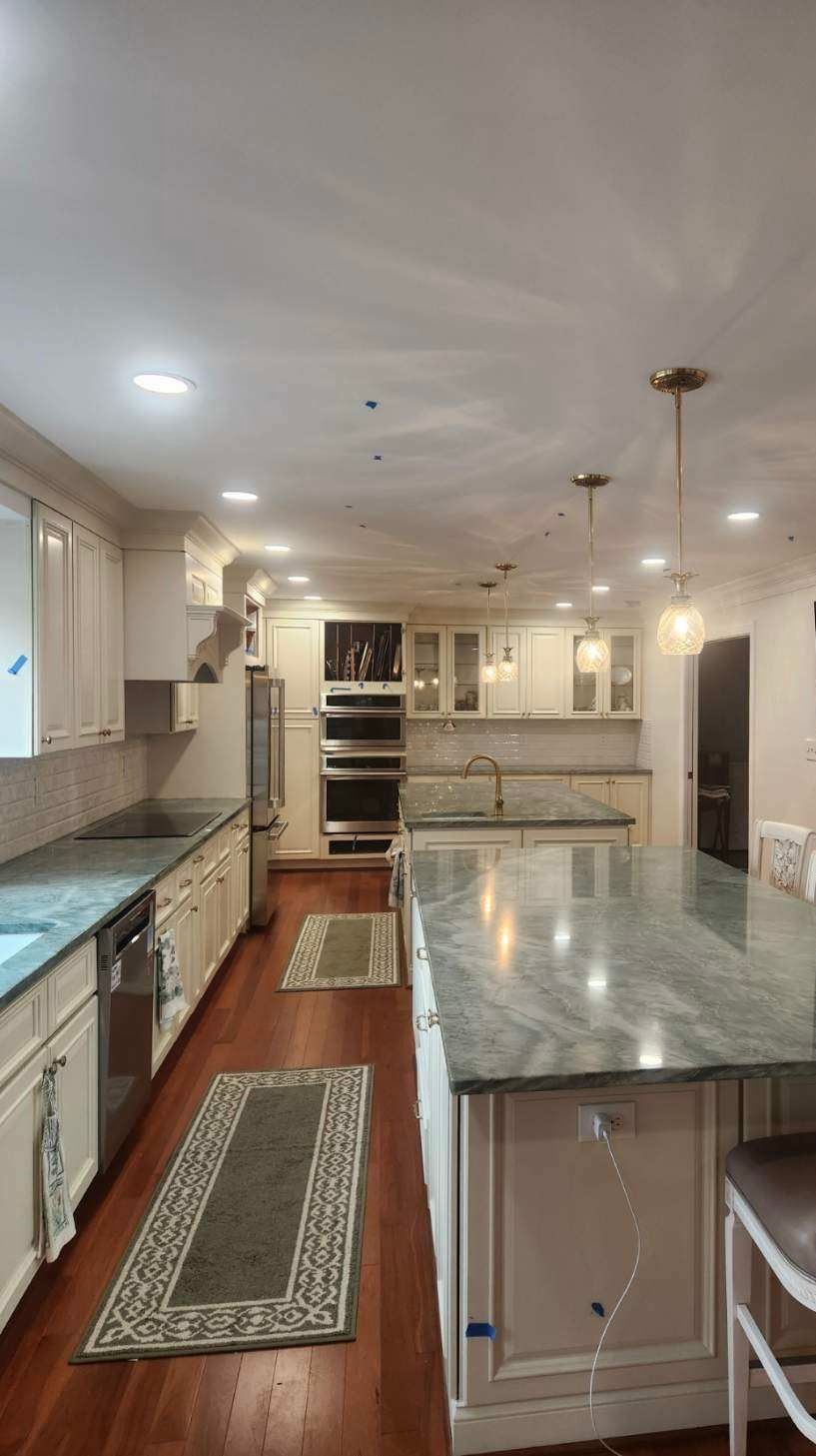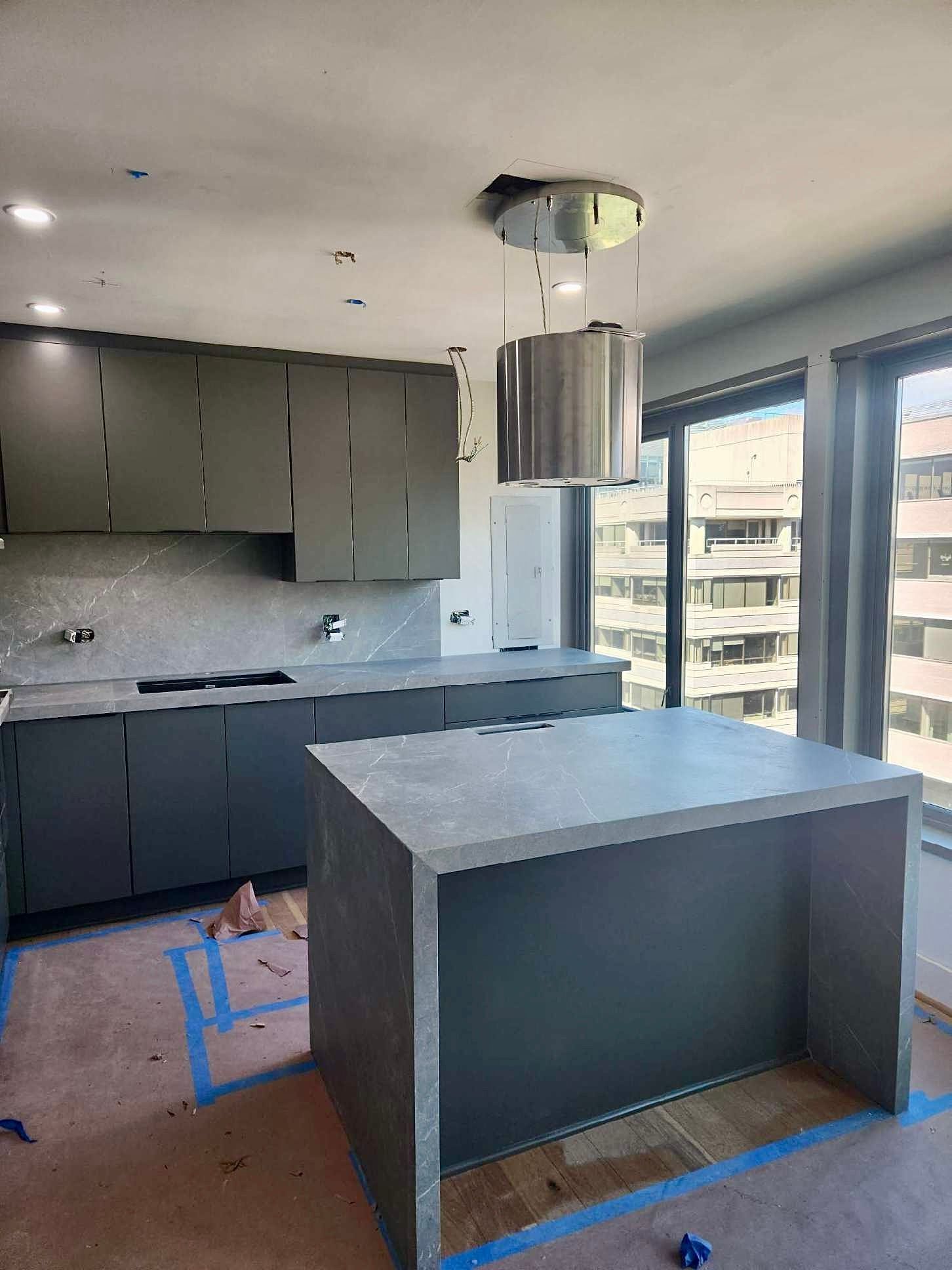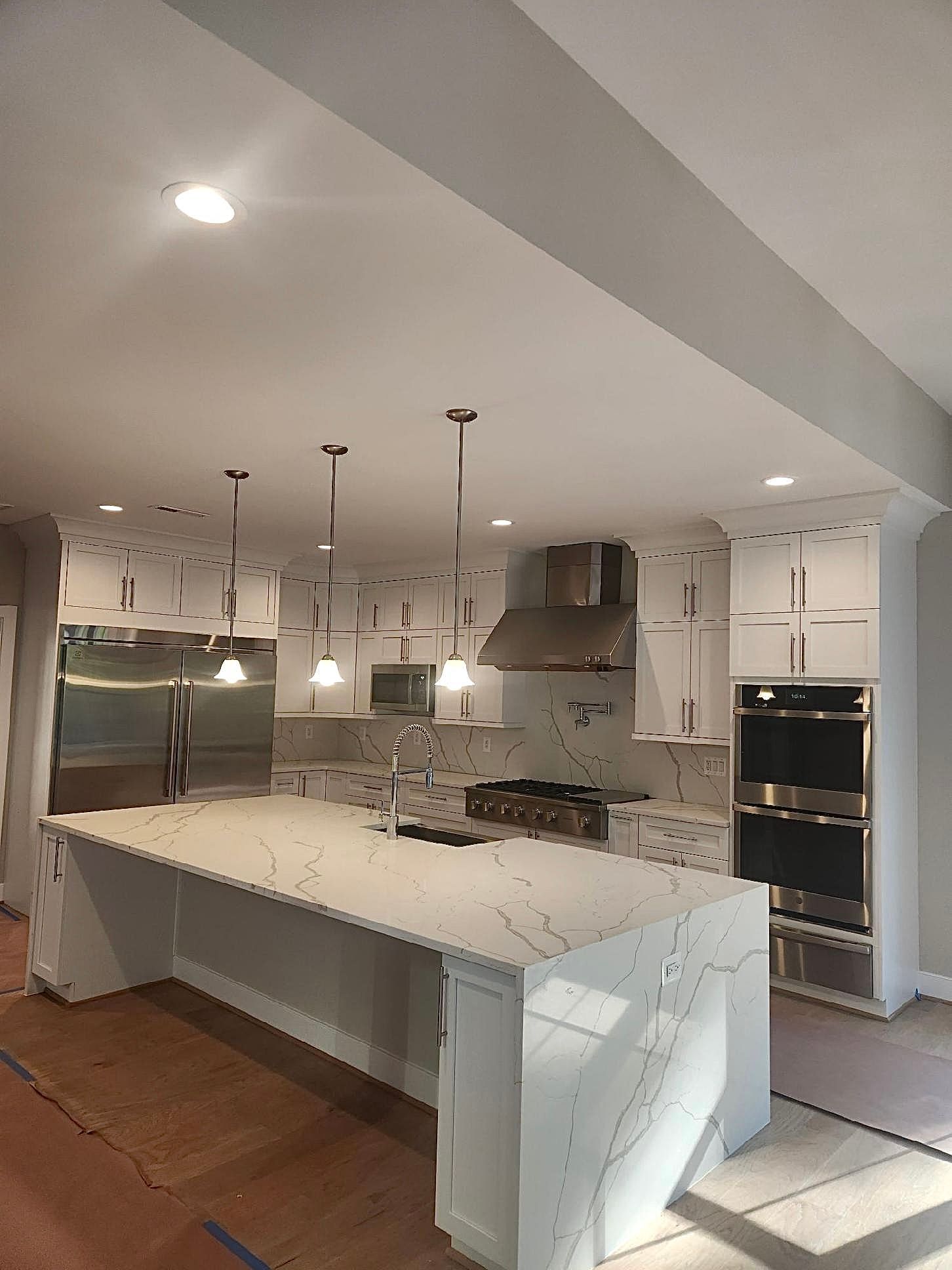Granite, Marble, and Quartz in Chantilly, VA
Exceptional Stone Products for Every Need
At Power Marble & Granite, we specialize in offering a wide range of premium stone products designed to meet diverse needs for countertops and more. Located in Chantilly and serving Northern Virginia, our commitment to quality and customer satisfaction is unparalleled. Whether you’re renovating your kitchen or designing a new bathroom, our stone products can enhance the beauty and functionality of your space. We provide:
- Granite: A durable, natural igneous rock known for its speckled appearance and resistance to heat and scratches, making it ideal for countertops and flooring.
- Silestone: An engineered quartz surface that combines natural quartz with resins and pigments, offering high durability, stain resistance, and a wide range of colors.
- Marble: A luxurious metamorphic rock prized for its elegant veining and smooth finish, commonly used in sculptures, countertops, and flooring.
- Quartzite: A natural metamorphic rock formed from sandstone, valued for its hardness, natural beauty, and resistance to heat and abrasion.
Call or text us to learn more about our stone products and how we can assist you.
Why You May Need Our Stone Products
Choosing the right stone products for your space is crucial for both aesthetic and practical reasons. Our stone options offer a variety of benefits that cater to your specific needs, ensuring a perfect match for any setting. Here are several reasons why you may need our stone products:
- Durability that withstands daily use
- Elegant and stylish appearance
- Easy to clean and maintain
- Heat and scratch resistance
- Customizable to fit any design
- Increases the value of your property
For more information on how our stone products can meet your needs, reach out to us today.
Key Benefits of Choosing Power Marble & Granite
When you choose Power Marble & Granite, you're not only getting high-quality stone products but also a range of benefits that set us apart. Our commitment to excellence ensures that you receive the best service and value. Consider the following advantages:
- Restoration certified
- Resurfacing slab certified
- Founded in 1994
- Immediate free estimates by text
- All services have a1-year warranty
- Over 30 years experience
- Locally and family-owned
- Woman and minority-owned
- In-house work
- No subcontractors
- Free estimates
- Free consultations
- Laser templating is used for optimal quality
- Will match any price
- We will work with the insurance
- Same or next-day services may be available
- We handle construction permits
- We will provide liability insurance for projects we work
Contact us now to discuss how we can help you with your stone product needs.
Contact Us
Ready to transform your space with our exceptional stone products? Get in touch with Power Marble & Granite today to explore your options and get started on your project. Our team of experts is here to provide personalized assistance and ensure your complete satisfaction.
Custom Stone Resurfacing & Restoration Services
At Power Marble & Granite, we not only provide premium stone products but also specialize in resurfacing & restoration services tailored to meet your home or commercial property's specific needs. Whether you're working with granite, marble, and quartz in Chantilly, VA, or want to refresh your existing countertops, our team delivers expert craftsmanship and long-lasting results. We know how important it is for your stone surfaces to remain as stunning as the day they were installed, and our process is designed to make that happen seamlessly.
Stone surfaces experience wear over time due to regular use, moisture exposure, and impact damage. Resurfacing involves grinding, polishing, and sealing to bring out the natural luster of your granite, marble, or quartz. This process eliminates scratches, dull spots, and discoloration. In many cases, our clients are surprised by how much value and beauty is restored—without the need for a full replacement. Especially for homeowners working with granite, marble, and quartz in Chantilly, VA, resurfacing offers a cost-effective way to rejuvenate their living spaces.
Granite, Marble & Quartz Repair & Maintenance
Our team provides expert repair & maintenance services to prolong the life of your stone installations. Chips, cracks, and stains can diminish the aesthetic appeal of even the finest surfaces. We use high-grade materials and techniques to repair damaged sections seamlessly, making it nearly impossible to notice there was ever an issue. Maintenance services also include resealing countertops to protect against future wear and staining.
Homeowners and business owners alike rely on our expertise to preserve their investment in granite, marble, and quartz in Chantilly, VA. These surfaces are not only valuable; they are central design features that anchor the look of kitchens, bathrooms, and entryways. Regular maintenance ensures that your stone remains in pristine condition for decades to come.
Custom Edge Work & Finishing Options
We offer a wide selection of custom edge profiles and finishing options to ensure your countertops, vanities, and other surfaces reflect your unique style. From classic bevels to intricate ogee designs, we tailor every edge to your preference. Each piece is cut and polished in-house to guarantee a flawless finish and a perfect fit. Our experts are trained in both traditional and contemporary finishes that match or enhance the look of granite, marble, and quartz in Chantilly, VA.
Incorporating customized edges and finishes is an excellent way to distinguish your project and make your stone features stand out. We take pride in providing a level of detail and precision that sets Power Marble & Granite apart. Whether you’re aiming for a refined, minimalist aesthetic or a more ornate, traditional style, we ensure each piece is a work of art.
Serving Residential & Commercial Clients
Our resurfacing and restoration services are ideal for both residential and commercial properties. Homeowners looking to update kitchens, bathrooms, or fireplaces can rely on our team for impeccable results. At the same time, we frequently work with commercial clients—such as restaurants, hotels, and retail stores—who need durable, beautiful stone surfaces that impress customers and stand up to heavy use.
In areas with high foot traffic or constant exposure to spills and heavy objects, stone surfaces demand more than just a good look—they need to be functional and resilient. That’s why so many businesses choose granite, marble, and quartz in Chantilly, VA, and count on Power Marble & Granite to maintain them. With our dependable team and flexible scheduling, your project will be completed with minimal disruption.
Eco-Friendly Practices & Materials
At Power Marble & Granite, we are committed to using sustainable materials and eco-friendly processes wherever possible. By resurfacing existing stone instead of replacing it, we help reduce waste and lower the environmental impact of renovation projects. This approach is particularly beneficial when working with high-quality granite, marble, and quartz in Chantilly, VA—materials that don’t need to be discarded to look brand new again.




Share On: